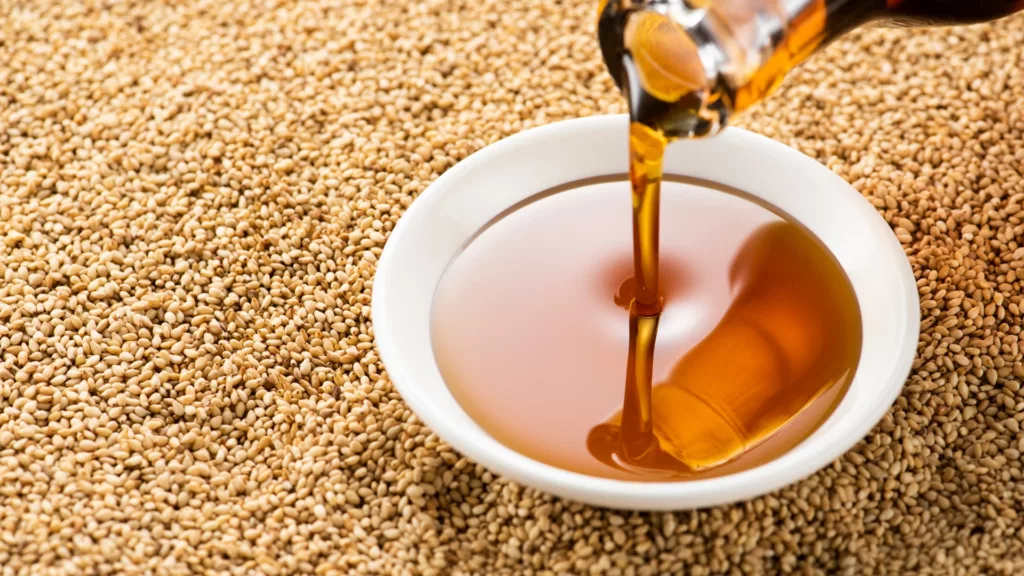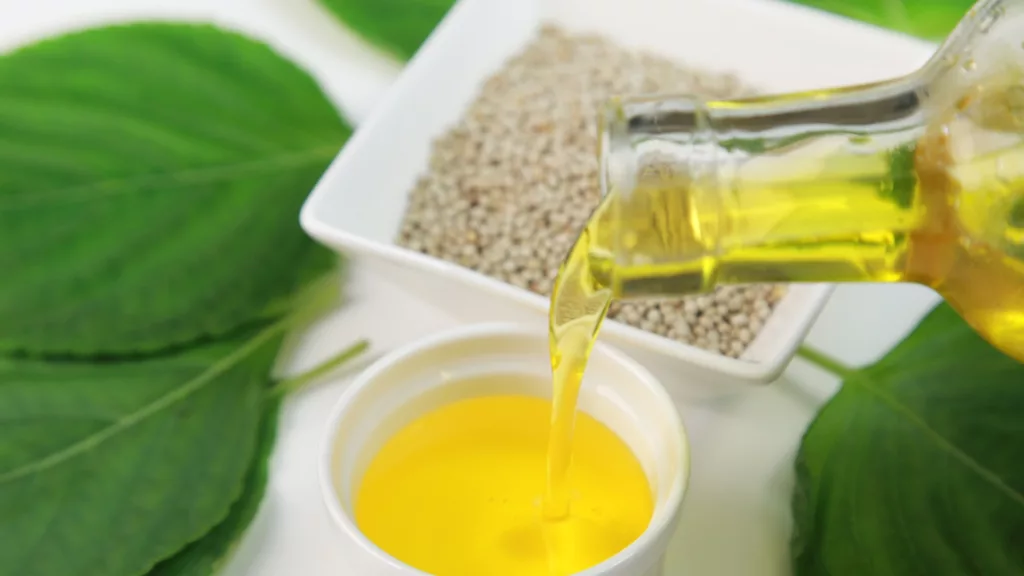Korean sesame oil, 참기름 or chamgireum, is a staple of Korean cuisine. Its rich, nutty aroma, extracted from toasted sesame seeds, has won over chefs and gourmands alike. The pressing procedure, whether cold or hot, determines the flavor. It shines in traditional recipes like bibimbap and soups, but its potent flavor necessitates caution. Its versatility is demonstrated by its ability to temper spicy recipes or emphasize seafood. This golden oil reflects the art of balance in culinary expression and is a testament to the delicate dance of tastes in Korean cookery.
Production
From cold to hot pressing, the production of Korean sesame oil dictates its final taste. Cold Pressing retains nutrients, resulting in a more subtle flavor, making it akin to canola oil in its seasoning capabilities. Hot pressing offers that deep, signature aroma and taste, reminiscent of what many know as toasted sesame oil.
Culinary Use
Korean sesame oil has a distinct and powerful nutty flavor and aroma. Even in small amounts, it can add a rich flavor to a dish, improving the whole sensory experience.
- Seasoning
Korean sesame oil is frequently used as a seasoning or finishing oil, drizzling it over foods to give its distinct scent and flavor. It’s a common ingredient in recipes like bibimbap(비빔밥) and kimbap(김밥). - Cooking
Understanding the sesame oil smoke point is vital when incorporating toasted sesame oil (참기름) into your dishes.
Toasted sesame oil: With its distinctive and potent flavor, toasted sesame oil has a smoke point that is typically below 320°F (160°C). Because of this lower sesame oil smoke point:
Salads & Garnishes: It is commonly added to salads and dressings to enhance the dish’s overall aroma and flavor without the need for heating.
Light Sautéing: If you plan to lightly sauté using toasted sesame oil, ensure it is done at a temperature where no smoke emerges.
Soupy Dishes: For dishes with a liquid component, like seaweed soup (미역국) or porridge (죽), it’s best to stir in the sesame oil during the last phase and boil thoroughly.
Being aware of toasted sesame oil’s characteristics is essential for optimal culinary results. Though perfect for low-heat applications, exercise caution as its robust nature can readily eclipse the flavors of other ingredients.
This commanding presence, though, is a two-edged blade. While it can elevate certain recipes, if used excessively, it can dominate the natural flavors of other components. This is especially true for recipes using rare or expensive ingredients, when the inherent flavor and scent should shine through. Excessive usage of sesame oil might disguise these delicate nuances, making the dish’s distinct flavor less noticeable.
Nutritional and Medicinal Value
Is sesame oil good for you? Absolutely! Enriched with beneficial fats, vitamins, and antioxidants, its sesame oil benefits are manifold. High in polyunsaturated and monounsaturated fats, it’s also a source of vitamin E. In traditional Korean medicine, its warming properties have been tapped to treat various ailments.
Storage
Wondering, does sesame oil go bad? Like other oils, improper storage can make it rancid. For longevity, store it in a cool, dark place, preferably within a year after opening. To further prolong its life, consider refrigeration.
Purchasing Advice
- Color and Clarity: High-quality sesame oil should be clear and golden in color.
- Aroma: The aroma should be distinct and pleasant. It could be old or of inferior quality if it has an off or stale odor.
- Origin: While sesame oil is manufactured in many places, if you want true Korean sesame oil, search for the country of origin on the label.
Conclusion
Korean sesame oil is a popular ingredient that provides depth and flavor to a variety of recipes. Its distinct flavor profile and cultural importance make it a must-have for any fan of Korean food. It will enrich the culinary experience whether used as a finishing touch or as a major ingredient of a dish.



